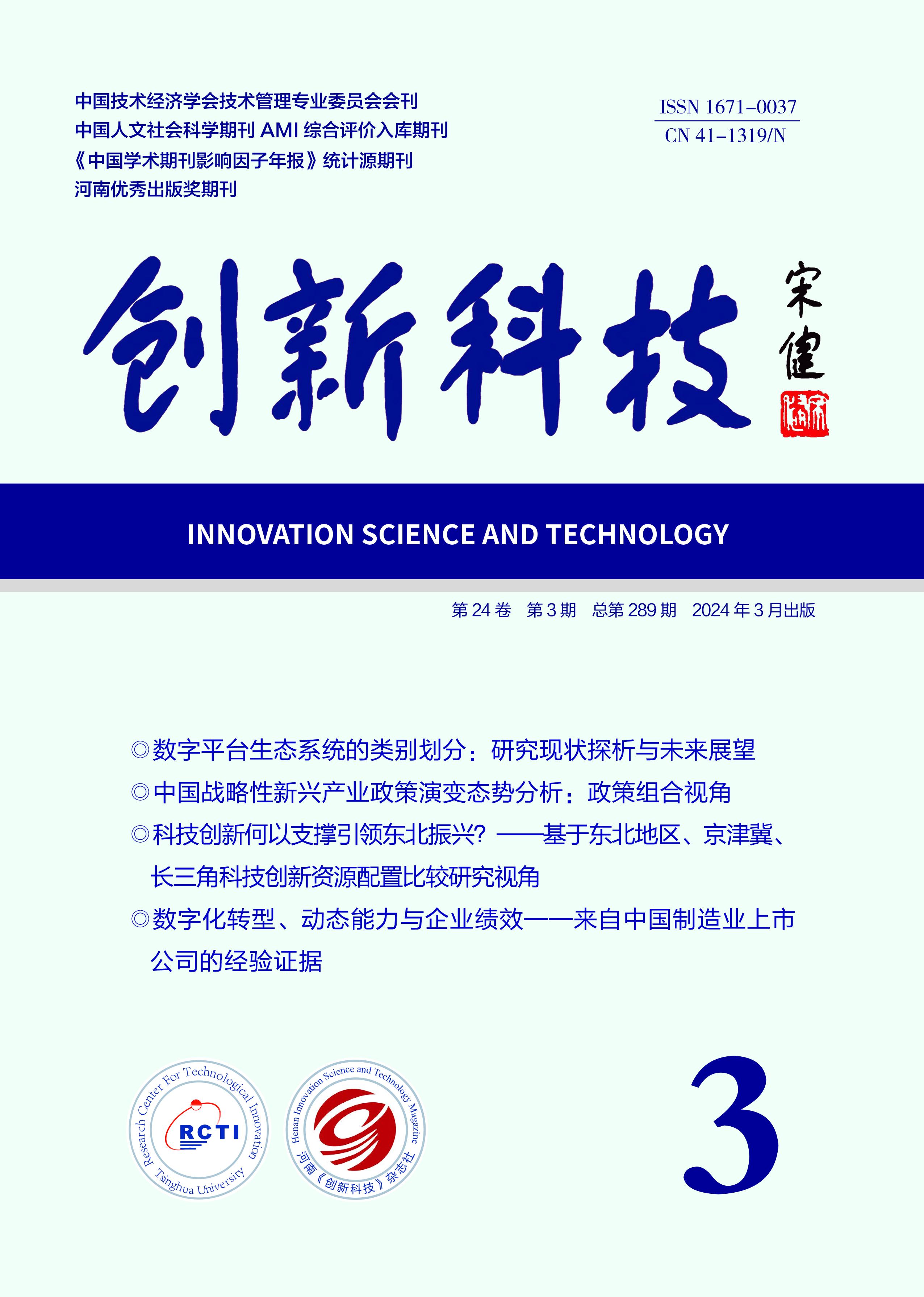INNOVATION SCIENCE AND TECHNOLOGY
Quick Search

All publication are peer-review
Peer review will take the from of double-blind review Judge objectively and impartially
There is no conflict of interest for the reviewer
Review articles shall be kept strictly confidential prior to publication
Theories and Methods of Science of Science
Analysis of the Evolution of Scientific and Technological Innova⁃ tion Paradigm in the Context of the New Round of Scientific and Technological Revolution and Industrial Transformation
Fu Cuixiao, Zhuang Jun
(Shanghai Institute for Science of Science, Shanghai 200031, China)
Abstract: Against the backdrop of the new round of scientific and technological revolution and industrial transformation, it is essential to intensify our efforts in scientific and technological innovation. This involves analyzing and understanding the latest trends and movements associ⁃ ated with this new era, better grasping the new characteristics of current global innovative activi⁃ ties, such as scientific discoveries and technological inventions, and delving into the underlying logic behind the evolution of scientific and technological innovation paradigms. Based on a litera⁃ ture review that examines the trends and movements of this new round of scientific and techno⁃ logical revolution and industrial transformation, research on scientific and technological innova⁃ tion paradigms, and studies on strategies for adapting to new paradigms in innovation, it is clear that the environment for scientific and technological innovation has shifted. This new environ⁃ ment is characterized by changes in aspects such as innovation demands, cognitive paradigms, supply-demand relationships, and focal points of innovation. Overall, the development of scien⁃ tific and technological innovation shows new trends: there is a significant expansion in the breadth of innovation, a remarkable deepening in its depth, and a notable acceleration in its speed. Then, it is indicated that the scientific and technological innovation paradigm is a system⁃ atic concept that encompasses a widely accepted system of ideas within both the scientific and technological community and the industrial sector. This paradigm involves multiple dimensions, including the value of scientific and technological innovation (its purpose and direction), the key stakeholders involved, the factors influencing innovation, and the various paths to achieve it. Starting from the four dimensions of value, subject, object, and path, a "four-dimensional" theo⁃ retical analysis framework for scientific and technological innovation paradigms is proposed. Based on this framework, an in-depth analysis of the evolution of scientific and technological in⁃ novation paradigms is conducted. It is noted that, in the context of a new round of scientific and technological revolutions and industrial transformations, the value of scientific and technological innovation has gradually evolved from meeting people's basic living needs to continuously en⁃ hancing people's sense of happiness through new technologies. Moreover, innovation activities have shifted from a closed paradigm to an open one, fostering interactive cooperation amongstakeholders that transcends traditional limitations of time and space, and leading to the forma⁃ tion of a global innovation network. The tasks and goals of scientific and technological innovation have become increasingly complex, requiring the collaboration of multiple organizations. The characteristics of "big science and technology" and "large investment" have become more promi⁃ nent. The paths of scientific and technological innovation have gradually transitioned from a lin⁃ ear model to a more systematic model that is based on a dynamic innovation ecosystem and en⁃ compasses the whole innovation process. Finally, it is essential to emphasize the importance of implementing reform measures of systems and mechanisms that reflect contemporary values, un⁃ derstand underlying trends, and are innovative. This approach should consider the dimensions of subjects, objects, and paths within the new innovation paradigm. We need to strengthen connec⁃ tions, leverage strengths, and establish new advantages. To achieve this, several key recommen⁃ dations are proposed: first, strengthen the government's macro-coordinating role to optimize the management of the entire innovation chain; second, fully leverage the market's decisive role in resource allocation to systematically develop leading enterprises in the field of science and tech⁃ nology; third, cultivate, recruit, and effectively utilize talents to enhance the core competitive⁃ ness of the scientific and technological workforce; fourth, accelerate efforts to transform scien⁃ tific research strengths into industrial advantages and focus on improving the collaborative inno⁃ vation network both at home and abroad.
Key words: scientific and technological innovation; new paradigm; new round of scientific and technological revolution and industrial transformation; evolution; value; subject; object; path